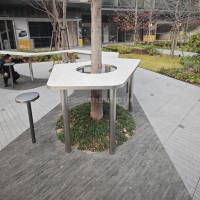Welcome to the website for landscape facilities products and knowledge.
How does the shape of a landscape round trash can influence its resistance to tipping over?
The shape of a landscape round trash can plays a critical role in its resistance to tipping over, especially in outdoor environments where wind, uneven terrain, or accidental bumps are common. A round design distributes weight evenly around the central axis, reducing the likelihood of imbalance compared to square or rectangular bins. The absence of sharp corners minimizes leverage points that could be exploited by external forces, such as strong winds or collisions.
Additionally, the rounded base often allows for a lower center of gravity, further enhancing stability. Many round trash cans are also designed with a wider base, which increases contact with the ground and prevents easy toppling. Materials like heavy-duty plastic or metal can complement this shape by adding weight without compromising mobility.
In contrast, angular trash cans may tip more easily due to uneven weight distribution and protruding edges. The round shape’s aerodynamic properties also help deflect wind, reducing the risk of being blown over. For optimal performance, pairing the round design with features like weighted bottoms or anchor points can maximize resistance to tipping, making it a reliable choice for public spaces, parks, and urban landscapes.
By prioritizing a round shape, manufacturers ensure that landscape trash cans remain upright and functional, even in challenging conditions. This thoughtful design not only improves durability but also reduces maintenance needs, making it a practical solution for outdoor waste management.
Related search:

Recommendation
An outdoor bar counter with stainless steel and terrazzo materials in an irregular shape